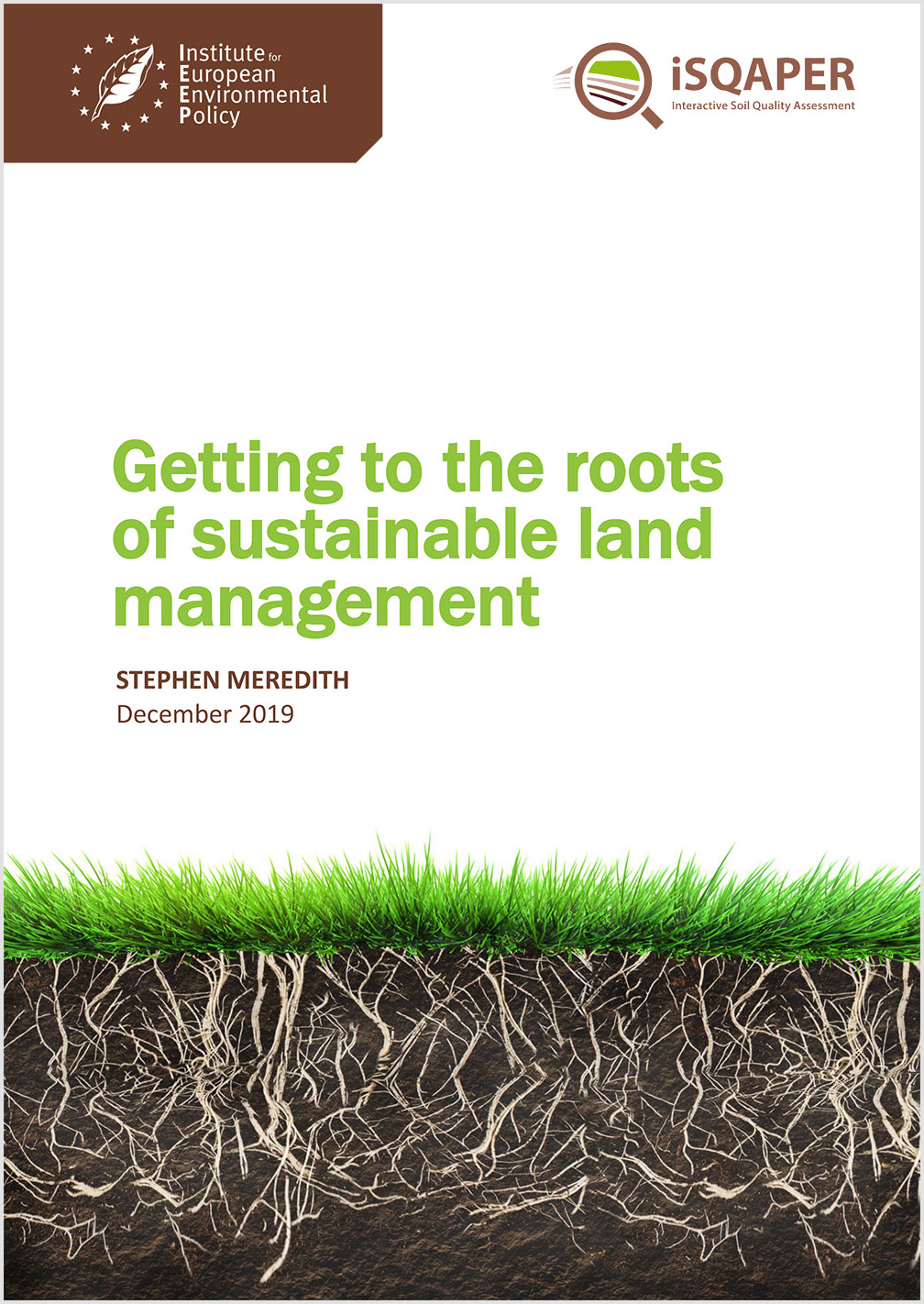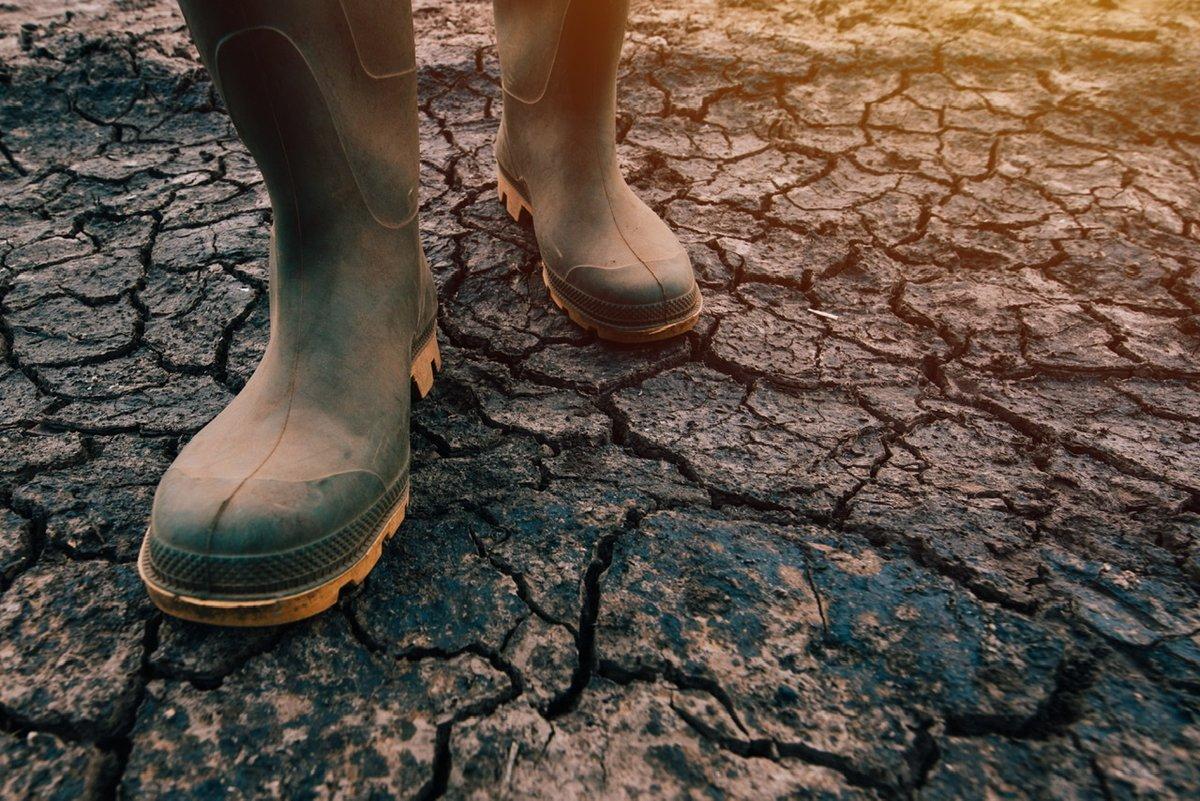Author: Stephen Meredith
This year’s World Soil Day highlights again the urgency for European and global policymakers to act on soil erosion as a key environmental and sustainability challenge.
Healthy soils are critical not only for the sustainable production, but also to address climate change and our biodiversity crisis.
The Food and Agriculture Organization (FAO) estimates that about one third of world’s soils are under threat, with erosion the most widespread form of degradation.
 A new policy brief by IEEP provides policy recommendations on turning the CAP into an instrument for addressing soil degradation A new policy brief by IEEP provides policy recommendations on turning the CAP into an instrument for addressing soil degradation |
Action on soils is integral to reaching the UN Sustainable Development Goals – in particular sustainable agriculture and food systems (SDG 2), the protection and conservation of biodiversity (SDGs 14 and 15) and climate action (SDG 13).
However, a recent assessment by the Sustainable Development Solutions Network (SDSN) and IEEP shows that Europe is not on track to achieve its SDG commitments.
The 2019 World Soil Day campaign “Stop soil erosion, Save our future” is a reminder to the new European Commission of the necessity for Europe to show leadership on soils – particularly in the agriculture sector.
Larger than Greece
The latest estimates show that approximately 11.4% of the EU’s territory is affected by moderate to severe soil erosion from water (up to 5 tonnes of soil per hectare per year), including about 12.5 % of arable land equating to an area of 138 200 km² (larger than the size of Greece).
Furthermore, losses in crop productivity related to soil erosionfrom water alone are estimated to cost the EU agricultural sector around 1.25 billion euro annually.
While the introduction of management practices over the last decade – including reduced tillage, cover crops and grass margins – appear to have resulted in lower soil erosion from water, the area affected remains significant, not to mention the effects of other soil threats such as the loss of soil organic matter, soil biodiversity, compaction and contamination.
Action on soil is central to our response to climate and biodiversity crises
With soil functions and ecosystems services fundamental to sustainable land management, action on soils is a central part of fighting climate change and preserving biodiversity.
This year’s World Soil Day coincides with the UNFCC’s 25th UN Climate Change Conference – COP25 in Madrid – where all eyes are set on whether the overall global efforts for climate action will be raised.
This follows a recent special report on Climate Change and Land by the IPCC, which warns that climate change is expected to accelerate existing pressures on land, with potentially negative implications for human ecosystem health and food systems.
| There are signs that the European Commission will propose to raise the bar on climate action |
Already there are signs that the European Commission, backed by the Parliament, will propose to raise the bar as part of its Green Deal by committing to a target to reduce GHG by 55% by 2030, to become climate neutral by 2050.
However, for this ambition to be realised in the agriculture sector, transition pathways towards net-zero agriculture by 2050 must be at the centre of the EU’s farm policy. Many of these pathways are considered in research conducted by IEEP.
The fight against climate change is also intrinsically linked to the preservation of biodiversity, with soil biodiversity playing a critical role in soil health and ecosystem functions below the ground, as well as sustaining life above ground.
CAP post-2020 and the need for a transformative agenda
Currently, the Common Agricultural Policy (CAP) is the EU’s main policy tool available to support actions on agricultural soils and land management in Europe.
CAP support can potentially create powerful incentives and disincentives that affect land management decisions.
However, to date, efforts to mainstream environmental and more recently climate considerations into the CAP have delivered mixed results and have not been sufficient to address the scale of the soil threats and other sustainability challenges.
| Efforts to mainstream environmental and climate considerations into the CAP have delivered mixed results |
The CAP reform post-2020 is the latest attempt by policymakers to put environmental and climate action at the heart of the policy.
To learn more, read our new briefing paper ‘Getting to the roots of sustainable land management: A briefing on the Common Agricultural Policy in the EU post-2020’.
The Post-2020 reform could deliver much-needed climate and environmental improvements. However, to reach its full potential, the Commission’s proposals and their environmental and climate ambition need to be further enhanced by the European Parliament and Council during the co-decision process.
The current direction of the discussions amongst agricultural representatives in the European Parliament and AGRI Council suggests that EU and national policymakers have not fully grasped the necessity for a transformative agenda.
This business as usual trajectory demonstrates how critical it is that the EU has clear strategies for how Member States will commit to addressing their environmental and sustainability needs collectively to 2030 and towards 2050 across different sectors.
For the agriculture sector, this requires full alignment of the CAP with the SDGs, including an increase in expenditure on sustainable development priorities and at the same time the phasing out of spending that is not in line with these priorities.
The new Commission’s forthcoming Green Deal, as well as the strategies for sustainable food, biodiversity protection, and a “zero-pollution” commitment, can provide a common direction of travel at EU level – but only if the EU has clearly defined 2030 targets as to where the agriculture, forestry and wider food sectors must make an active and measurable contribution.
Further reading
Bas-Defossez, F and Meredith (2019) CAP 2021-27: Comparative analysis of environmental performance of COMENVI and COMAGRI reports, report for NABU by IEEP.
Bowyer, C., and Keenleyside, C., 2017. Joining the Dots — Soil health, Agriculture and Climate: A Briefing on agricultural policy in the EU, its role in soil protection – linking soil to land use related climate goals. Interactive Soil Quality assessment in Europe and China for Agricultural productivity and Environmental Resilience (iSQAPER) project.
Frelih-Larsen, A. et al. (2016). ‘Updated Inventory and Assessment of Soil Protection Policy Instruments in EU Member States.’ Final Report to DG Environment. Berlin: Ecologic Institute.
Hart, K., and Bas-Defossez, F. (2018) CAP 2021-27: Proposals for increasing its environmental and climate ambition, report for NABU by IEEP.
Lóránt, A., and Allen, B. (2019) Net-zero agriculture in 2050: how to get there? Report by the Institute for European Environmental Policy.
SDSN & IEEP. 2019. The 2019 Europe Sustainable Development Report. Sustainable Development Solutions Network and Institute for European Environmental Policy: Paris and Brussels


